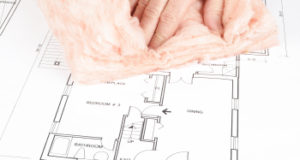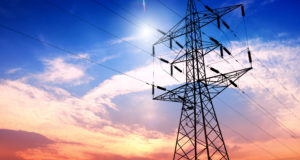|
Listen To The Article
|
During a 2009 stop at a Home Depot in Alexandria, Virginia, President Obama called on Congress to pass a tax credit that would help homeowners pay for energy-efficiency retrofitting projects, and he referred to insulation in particular as “sexy.” “Most of this stuff is going to pay for itself,” the President stated. “You put in the insulation, you weatherize your home now, you will make up that money in a year or two years or three years, and then everything after that is just gravy.”
Whether you agree with his politics or not, if you are a wise cookie, you have to give credit where credit is due, and President Obama was certainly correct about the value of insulation. If you really do care about saving money, as well as about keeping your home cool in the summer and warm in the winter, you should recognize that insulation really is sexy, and if you don’t have enough of it – or the right type of it – you will undoubtedly learn to regret it—maybe not today, maybe not tomorrow, but soon, and for the rest of your life.
A fully insulated home can normally be up to 20 percent more energy-efficient than one without any insulation at all. But of course, the actual efficiency of any insulation setup will depend on a number of factors, such as the choice of materials, the precision of the fitting, the thoroughness of the coverage, and the maintenance practices that are followed after installation. Because of the potential savings, it behooves all home owners to make an effort to upgrade their insulation to maximize performance, especially if their residence was constructed before 1980 (most such homes are inadequately insulated), and all who are planning to build a brand-new home soon should make absolutely sure they develop an intelligent and comprehensive insulation plan as a part of the project.
But all the varieties of insulation comprise a complex constellation, and anyone jumping into the fray will need to make some hard decisions about what types and styles of insulation to purchase and about where exactly it should be installed. The principles that govern insulating practices are pretty simple, but as with most things, the devil is in the details, and if mistakes are made, energy may be wasted and extra costs incurred, both upfront and later on down the line.
Harness the power of the sun for your energy needs…
Meet The Fantastic Four
No matter how well-constructed a house is, air leaks are inevitable. Floors, ceilings, roofs, walls, basements, foundations, attics, joints, corners, the edges of windows, vents for fans or dryers, entrances and exits for piping, unsealed cracks or crevices – any and all of these areas are vulnerable to leakage, allowing warm air or cold air (depending on the season) to penetrate spaces where their presence is most unwelcome. Fortunately, the problem of air leakage and penetration is easily solvable, thanks to the enterprising companies who have dedicated themselves to serving the needs of the American homeowner by providing outstanding insulation products at (mostly) affordable prices to all who desire and need them. So lets take a closer look at the four most popular types of insulation available in the marketplace.
Batts and Rolls
Also called blanket insulation, batts or rolls are highly flexible products manufactured from mineral fibers (most commonly fiberglass, rock wool, or slag wool) or occasionally from natural fibers like cotton or sheep wool. Depending on your metaphor preference, this type of insulation can be unrolled like a sleeping bag or unfurled like a flag, and it comes cut in widths designed to fit perfectly in standard-sized spaces between wall studs and attic or floor joists. Of course, batt or roll insulation can be cut and shaped to cover spaces with unorthodox or non-standard dimensions as well, just as long as measurements are made precisely to ensure proper fit. Batts or rolls can be purchased with facing – often made from kraft paper or vinyl— that serves as a vapor barrier, but unfaced varieties are also available and are preferable when new insulation is being added over old (you want the new insulation to be permeable so moisture from the old does not become trapped). The materials used in batt or roll insulation have a fluffed-up cotton candy-like appearance, but when they are put into place they should not be compressed, since their fluffiness adds to the efficiency of their function.
Blanket-style insulation works very well for unfinished walls, including foundation walls, and in floors and ceilings. It is perfect for do-it-yourself insulation projects because it is inexpensive and easy to work with, and these convenience factors have helped make batt insulation the perennial best seller among all the various types of insulation available to homeowners.
Loose-Fill
As the name implies, loose-fill insulation comes in the form of loose fibers or pellets that must be blown into empty spaces with special pneumatic equipment, usually by trained installers. Because this type of insulation is unbound, it must be used only in areas that have already been enclosed, such as wall cavities, or in horizontal spaces such as those found on the floors of attics. Because loose-fill insulation can conform to fit the shape of any space, it is perfect for irregular spots where trimmed batt insulation would not be able to achieve full coverage of any cracks or other openings, and it makes a good choice for any location that is difficult to reach because it can be blown into place while standing at a distance.
Loose-fill insulation is usually made from fiberglass, cellulose, or rock or slag wool, and is generally used as a supplemental form of insulation in combination with types that have been pre-formed or pre-cut to fit in spaces with regular dimensions. Loose-fill is also frequently used in retrofit projects, since it can be easily applied over the top of previously installed insulation.
Rigid Foam
Rigid foam panels make an excellent insulation choice for a cornucopia of locations, including floors, ceilings, walls (interior or exterior), roofs, doors; you name it (and if it can be insulated), rigid foam panels can easily be cut to fit and are guaranteed to do a superb job. Rigid foam can stop the movement of heat through conduction dead in its tracks, and a one-inch-thick panel is more than enough to get the job done in most instances. Manufactured from materials such as polyurethane and polystyrene, rigid foam insulation panels can be fitted between joists and studs or right over the top of the frame, and because they are not material intensive, they tend to be priced quite reasonably. Rigid foam is more expensive than loose-fill or batts and rolls, this is true, but its efficiency still makes it a great buy. Highly suitable for do-it-yourself projects, rigid foam panels are extremely light and can be stored easily for future use, and their combination of lightness and strength can actually make them quite useful and practical for a wide variety of specialized purposes (the author of this article has used them to make archery targets, for example).
Rigid foam is not completely fireproof, and interior applications must be covered with ½ inch thick gypsum board or some other type of fire code-approved material. Also, when rigid foam panels are applied to exterior walls, they should be covered with some sort of waterproof facing to make sure moisture cannot easily penetrate around them.
Foam-in-Place
This moist, foamy type of insulation is stored in spray cans or other pressurized containers and is applied to a home in essentially the same way as shaving cream is applied to a man’s face. Only in this case, the foam will dry and harden and form a highly effective insulation barrier in any area where it has been sprayed. Foam-in-place insulation can be used in wall cavities, under floors, on unfinished attic floors and is sometimes used to plug any type of small or oddly-shaped openings where outside air might be able to penetrate (such as the cracks around door and window frames, the spaces around holes cut for pipes that enter the house from outside or from colder basements, any holes eaten in walls by rodents, etc.).
There are two styles of foam-in-place insulation available: closed-cell and open-cell. Closed-cell is somewhat viscous when it first comes out of the container, which allows it to flow over obstacles and reach remote spots that are otherwise difficult to get to. But it contains a gas that will cause it to expand quite a bit after it is out in the open air, which gives it the capacity to foam itself into place once the installer has sprayed it into an adjacent location. Open-cell, on the other hand, is filled with air and is foamy right out of the can, making it ideal for direct touch-ups in more easily accessible spots. Open-cell is cheaper than closed-cell, but open-cell insulation should not be used in basements because it can absorb moisture readily.
Slash Your Lighting Bill By 90%…And Never Change A Light Bulb Again!
Foam-in-place is not a great choice for the DIY crowd, since this type of insulation usually must be applied by certified installers with specialized equipment – which naturally makes foam-in-place more expensive than most other options. But despite some added cost, it is highly efficient in its operation—make no mistake about that.
Getting To Know Some Additional Awesome Alternatives
Most of the insulation used in the average home will come from one of the four categories just discussed. However, there are other types of insulation available that are frequently used for special applications or by those who like to push the envelope.
Insulating Concrete Blocks or Insulated Concrete Forms
When poured concrete or concrete blocks are used to build foundation walls or other sections of a structure, they are often insulated with rigid foam panels on the outside and/or inside. But there are special concrete blocks available that carry their own built-in insulation, sometimes in the form of polystyrene beads or rigid foam inserts. These blocks will not outperform conventional concrete that has been covered with panels of exterior insulation, but they can be very good for locations that are hot in the summertime and not overwhelmingly cold in winter. The reason for this is that concrete has high thermal mass, meaning it can easily absorb heat from the surrounding atmosphere, even on the inside of a home; this makes uncovered concrete walls nice to have when interior air temperatures are elevated and excess indoor heat is a problem.
The two most efficient and effective types of insulating concrete blocks are called autoclaved aerated concrete (AAC) and autoclaved cellular concrete (ACC). The former contains high-silica sand in its core while the other is filled with fly ash, a waste product that comes from coal burned in power plants. Blocks made from this combination of materials are about 80 percent air, and they have ten times the insulating ability of normal concrete blocks. AAC and ACC blocks are extremely light, absorb water effectively in their cores to help keep interior spaces dry, and can actually be neatly cut and shaped with a hand-held power saw.
Reflective or Radiant Barrier Insulation
When conventional insulation panels are covered with plastic film, kraft paper, polyethylene bubbles, cardboard, or aluminum foil, they gain the capacity to protect against excess radiant heat by simply reflecting it away. Reflective insulation systems use radiant barriers made from the materials just listed to protect interior areas from outdoor heat, and those who live in climates where the temperatures can rise to extreme levels in the daytime often install reflective insulation on exterior walls, above ceilings, in attics, or directly underneath rooftops. In order to work effectively, insulation covered with radiant barriers must be installed below or adjacent to an empty space on the reflective side so the heat they reflect can be trapped and kept at arm’s length.
Estimates are that reflective insulation systems can reduce cooling costs by 5 to 10 percent in homes built in hot, sun-drenched locations.
Rigid Fiber Board
Constructed from fiberglass or mineral wool (rock or slag), these one-to-two-and-a-half-inch hard insulating panels are specially constructed to withstand high heat and are normally used to insulate ductwork and the areas around furnaces or woodstoves. Heating and air conditioning technicians frequently add this type of insulation to duct systems in their shops before installation, but they can also install them onsite for homeowners who are seeking an insulation upgrade.
Structural Insulated Panels (SIP)
In dismissing the possibility of a truly constructive revolution, The Who famously invited everyone to “meet the new boss… same as the old boss.” But if Roger Daltrey or Pete Townsend were building a new home today, there is an excellent chance that both would invest in structural insulated panels (SIPs) to meet their construction and insulation needs, because these ingenious building materials are proof positive that revolutions really can and do change things for the better.
And it is proper to refer to SIPs as building materials, because that is exactly what they are – SIPs are prefabricated structural pieces with insulation already incorporated, and they are put together piece by piece to construct walls, ceilings, roofs, and floors. They are generally comprised of four-to-eight-inch-thick rigid foam board insulation sandwiched between two sections of oriented strand board or other similar structural material, and when fully assembled, they offer a uniform, consistent insulating experience that will deliver the ultimate in airtight living. Professional builders will generally be required to construct a home made from SIPs, but because these panels come pre-insulated, they are the classic example of a “two birds with one stone” type of technology – meaning they will save the homeowner time and money in the long run by streamlining the construction process.
One drawback of SIPs that is that they actually work a little bit too well. Homes built from these panels are so airtight that they will need fresh-air ventilation systems to meet most building codes, and this is also necessary to prevent indoor moisture problems that can arise in rooms that lack sufficient air flow. SIPs can also be vulnerable to attack by insects, which is why they are sometimes treated with boric acid that will repel creepy crawlies without causing harm to humans or pets.
Overall, homes built from SIPs can be 20 to 25 percent more energy-efficient than structures made from more conventional building materials. Even if they are a more expensive insulation option at the beginning, over time they could very well save a homeowner enough to make the extra upfront investment more than worth the trouble. SIPs are undoubtedly an up-and-coming technology, and we can expect to hear a lot more about them in the years ahead.
 Off The Grid News Better Ideas For Off The Grid Living
Off The Grid News Better Ideas For Off The Grid Living





